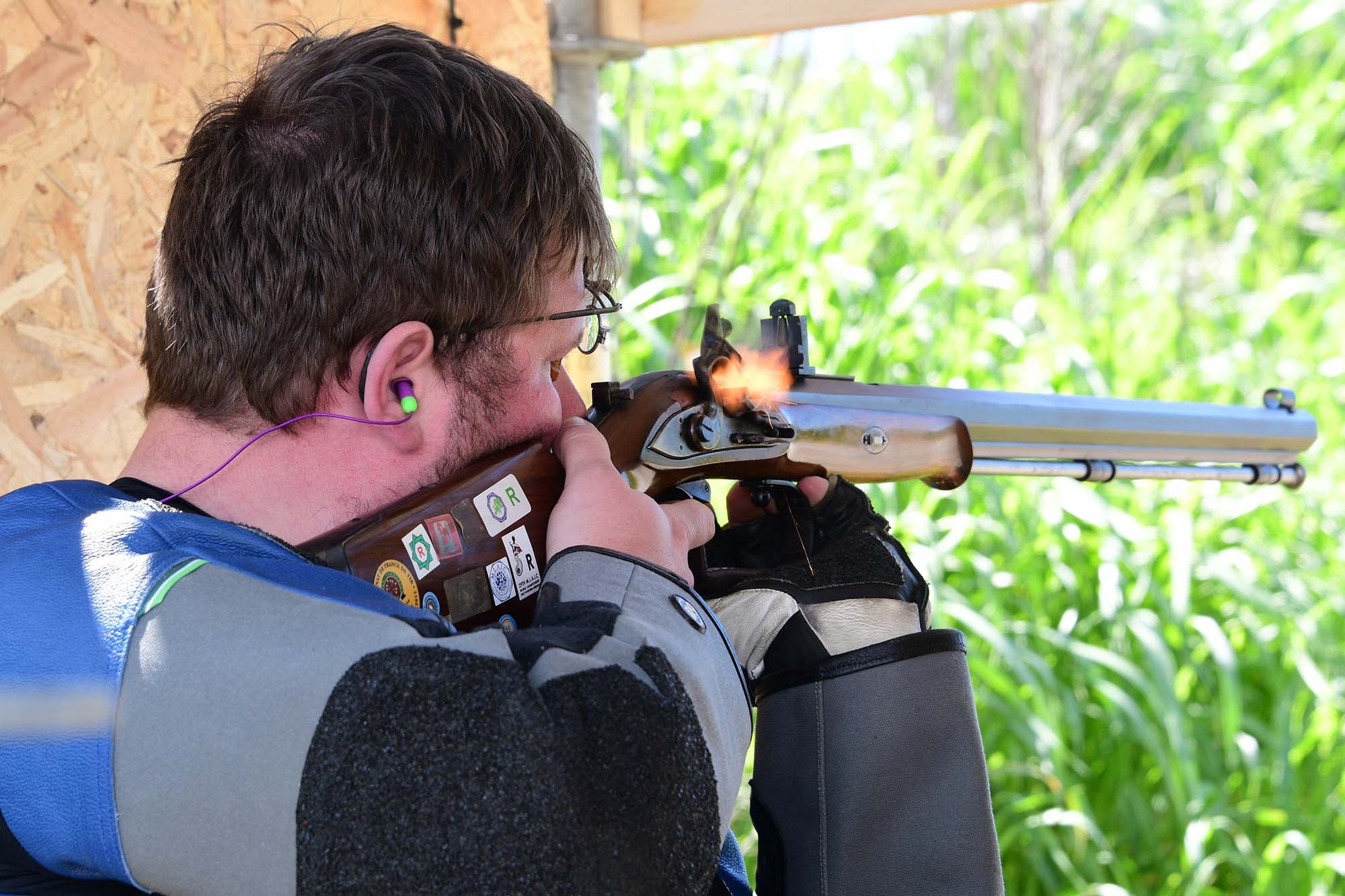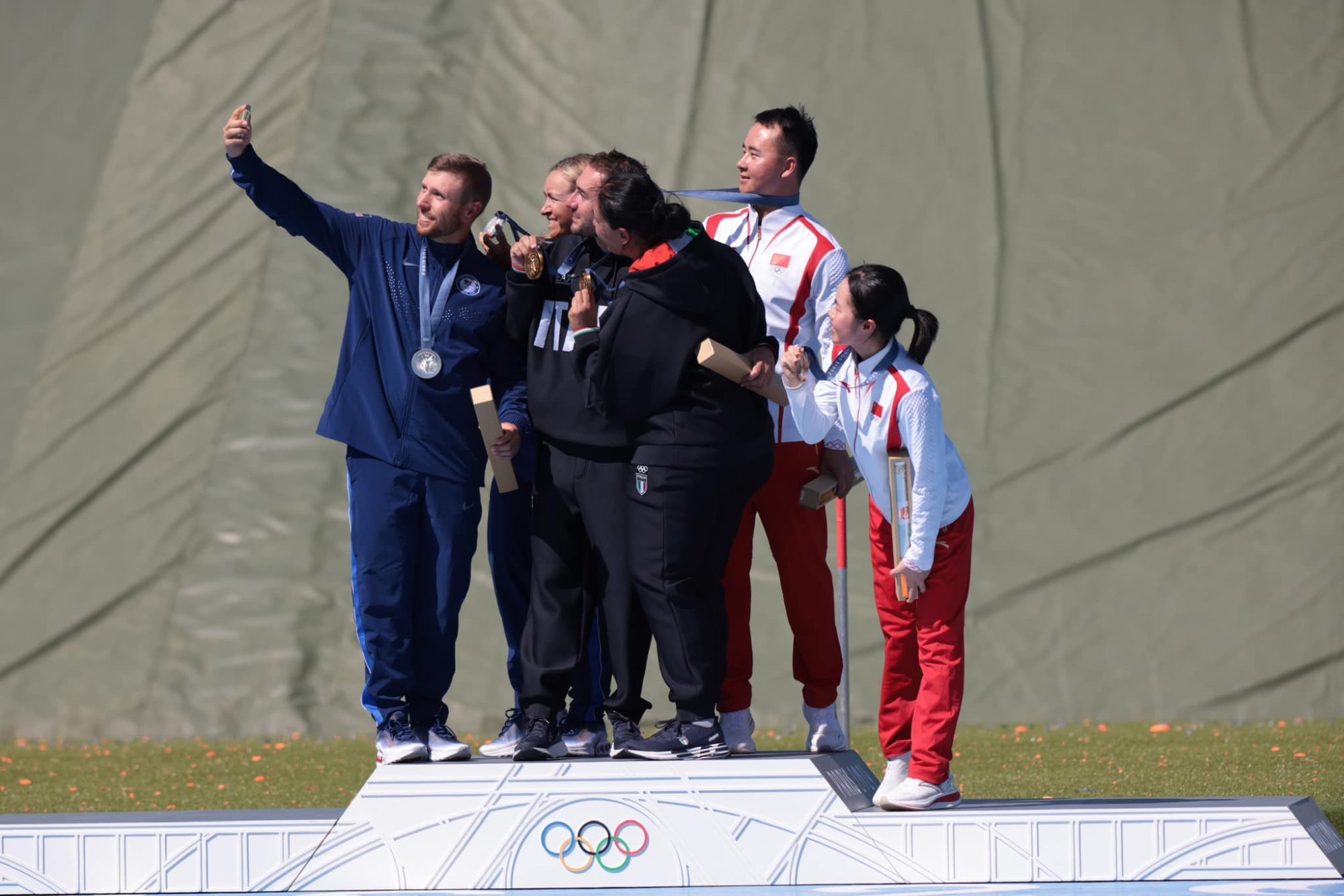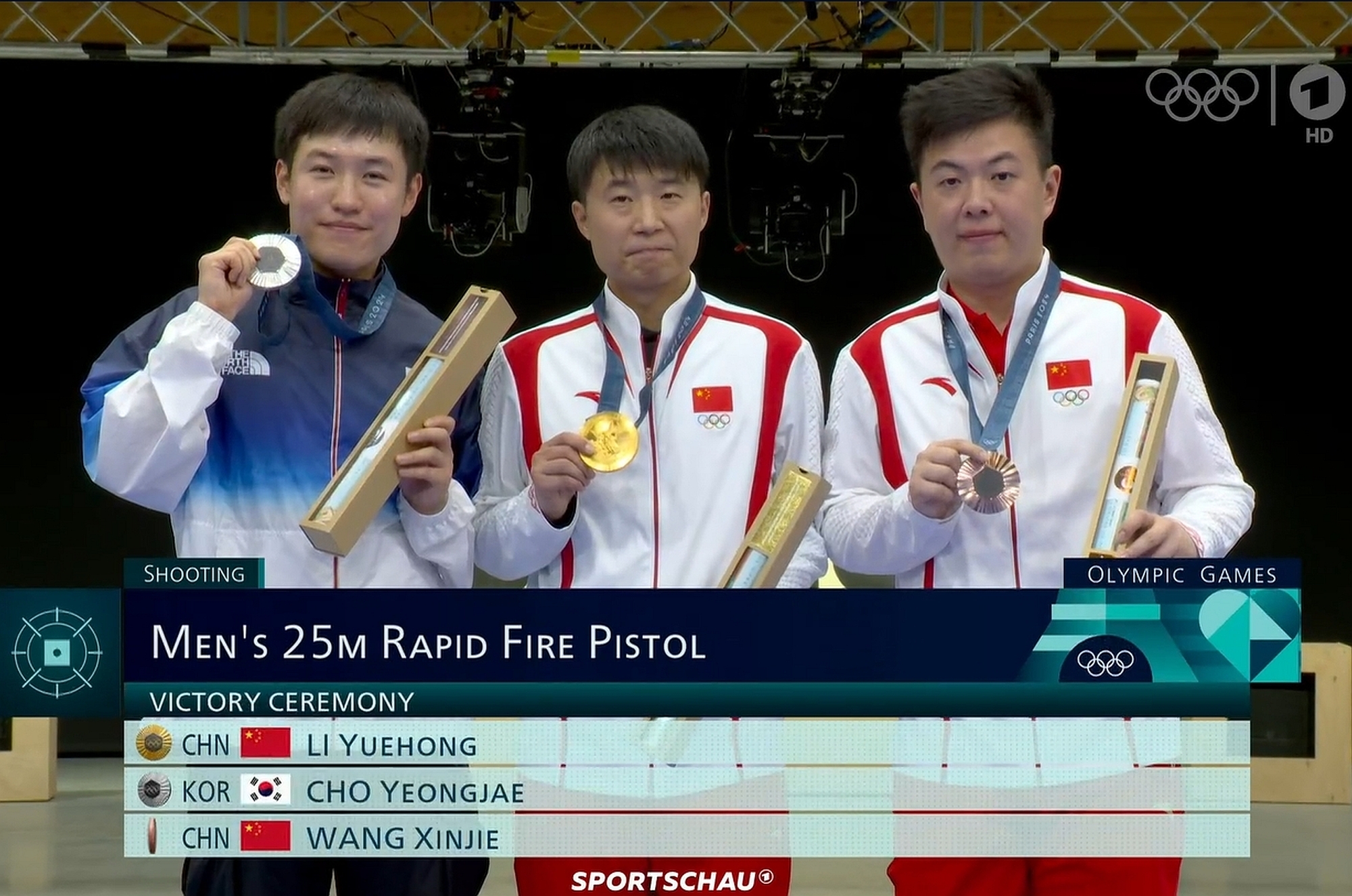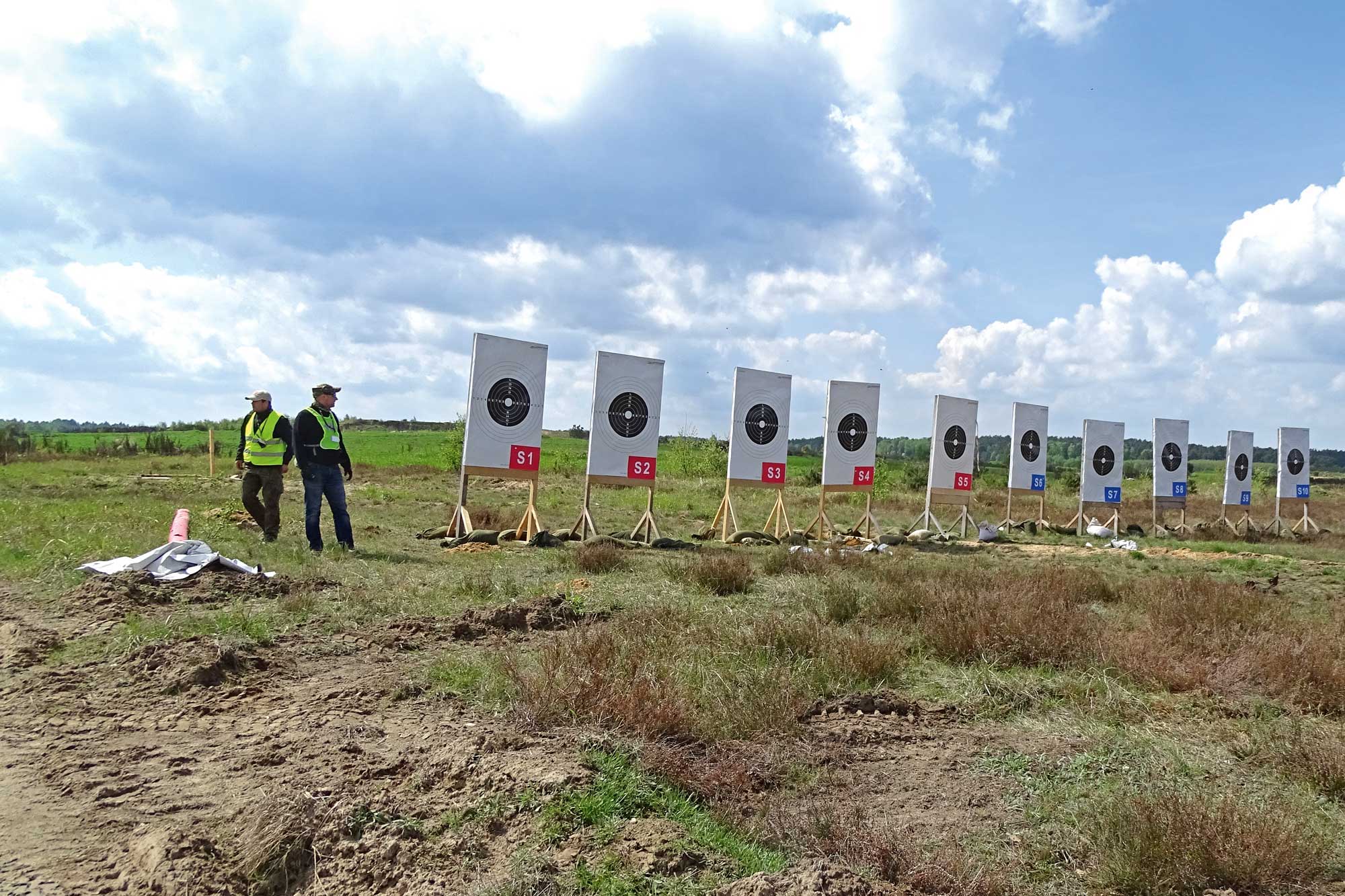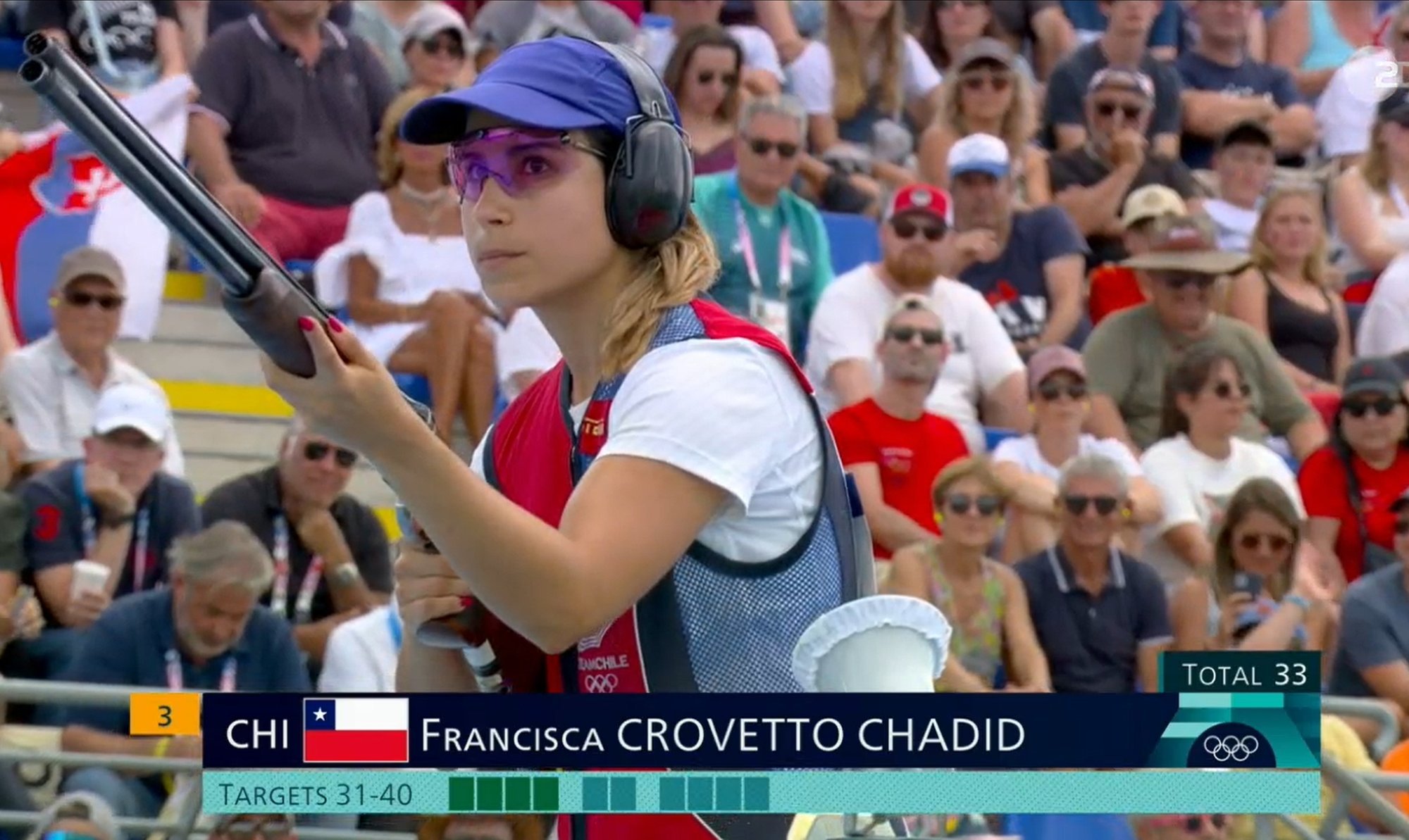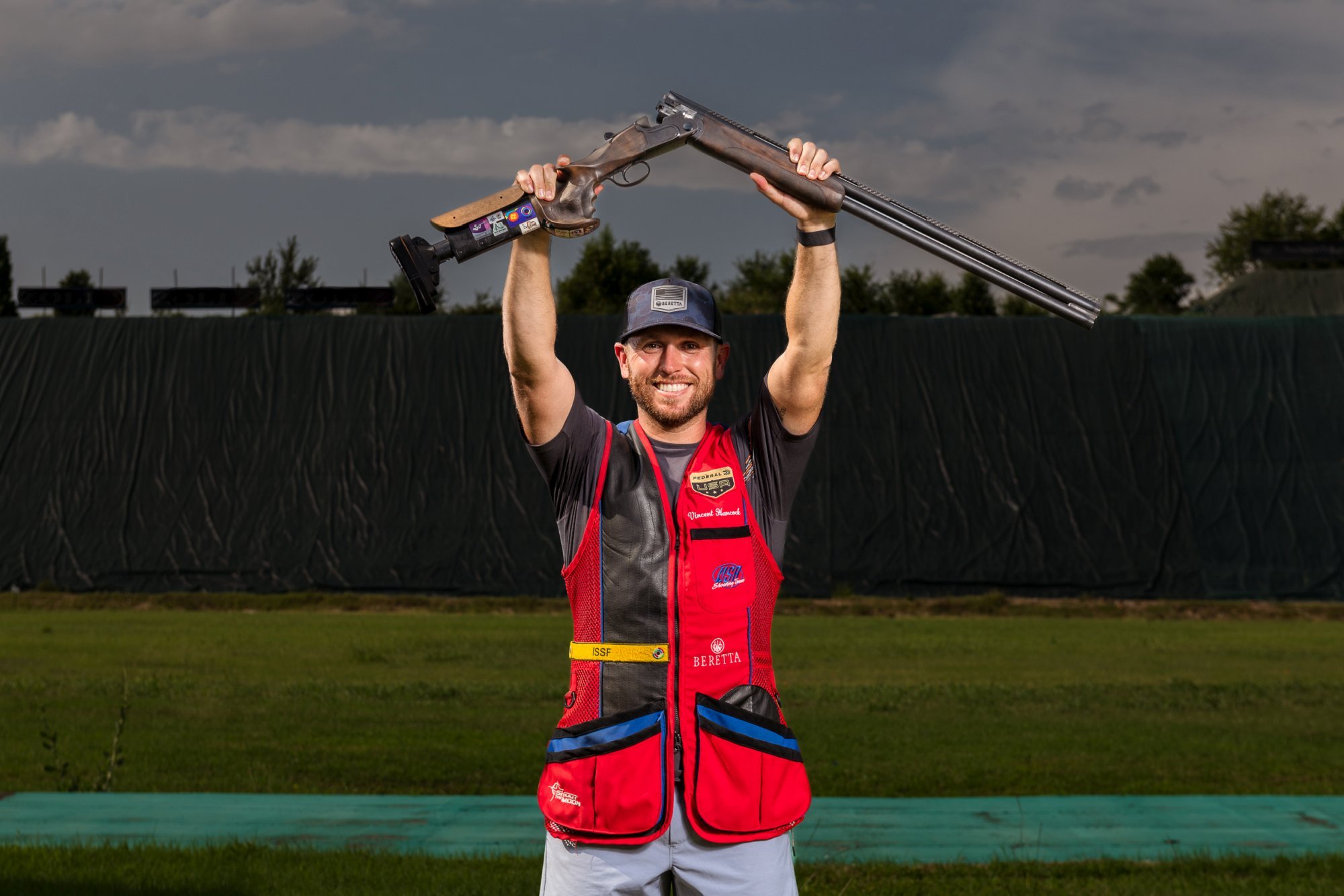In the last part of the series we dealt extensively about having a plan and consistently implementing it in case of emergency. The idea is to rehearse a single, basic "standard sequence" of punches and kicks, which is almost universally applicable, instead of having to master countless defense techniques as is usual in traditional martial arts and self-defense systems.
Flashback: basic attitude and defense against the swing
As already explained in the third part of our series, the sequence of movements I taught in my “Practical Unarmed Combatives” program for a successful defense consists in the defensive posture with the left foot facing forward, a left straight hand thrust (like a "jab" in boxing), further palm blows with the right and left hand, a right-sided horizontal elbow thrust, and a final right knee thrust (with possible foot trap). Last time we explained this versatile basic defense against a right side hook or “swing”.
The aggressor’s grip on the collar or lapel
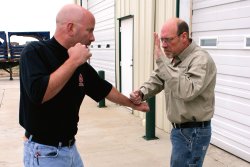
This time, however, it's about defending against an equally common street attack: a grip on the collar or on the lapel with the left hand to let a right, hard blow follow. At the same time, we will learn more details about the potential of our standard defense sequence and how to adjust it to the dynamics of different situations. But let's look at the attack method first. It is common for experienced attackers to grab or touch their victim with the non-dominant hand before striking with the strong hand. I have analyzed hundreds of surveillance videos from all over the world and have been able to observe this method over and over again. Irrespective of origin and culture, people instinctively use their weak hand to touch, measure or control their counterparts and thus accurately determine the location and distance to the target before striking. Since this instinct is so strong and works so well in practice, it is also part of our defense sequence. Conversely, of course, this also means that whenever possible we will try to prevent this form of approach if it is used against us. What is the best defense against a collar grip followed by a punch? It starts not allowing the aggressor to grab us.
Street attack
This prevents the aggressor from controlling us and effectively measuring the distance – the attacker has a harder time hitting us. To reconcile this with our basic defense, the best tactic is to simply omit the opening sequence of the left straight blow and go straight to the next movement with the right hammer fist. So if the attacker stretches out his left hand to grab us or has grabbed us already (because we were too slow), we hammer our right fist on his left hand or wrist and immediately follow the next left straight palm strike (which is technically the third movement of our basic defense sequence). This thrust can be varied depending on our intention, precision, and the reaction of our counterpart to the hammer blow already performed. We can use it to block the aggressor’s right hand or shoulder before he can even strike. An even better option is to land a direct blow on the aggressor’s face because it will immediately leave an impression on the opponent and also limit his field of view, which in turn reduces the risk of an opponent’s hit. However, if he can fire his right shot, our extended left arm still serves as a deflector, so his attack is halfway ineffective. The next move is a natural continuation of the "circling" action we started with our right hand. After hitting the aggressor's left gripping hand downwards with our hammer fist, we let our right hand flow in a natural circular arc into another downward hammer blow. If we have already managed to land a hit with our left palm strike, this hand can now serve as a "guide" so that we can hit precisely with our right hand.
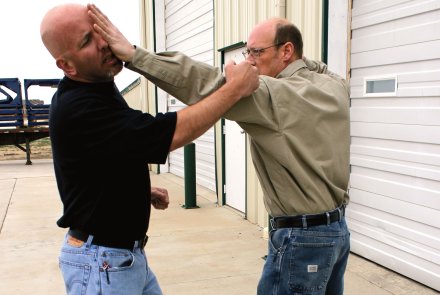
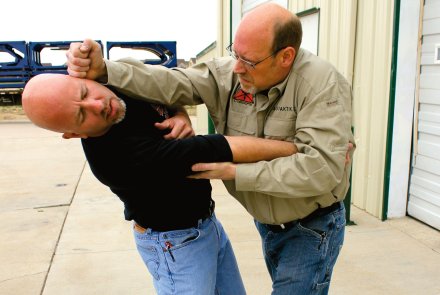
Aim with the left hand and final knee kick
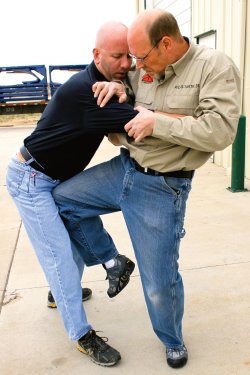
When we touch the aggressor’s head with our left hand, we aim with our right hand at the same area. Our right hand will quickly and easily find its target due to the already explained instinctive "measuring process". Even if we may not exactly hit the same target area, we try to hit hard with our right palm or fist focusing on the nose, neck, head and collarbone. You will notice that when you hit the right hand, the left hand automatically retracts due to the rotation of the shoulder. This natural backward movement can be used to grab the back of the arm above the elbow, allowing you to control your opponent and more accurately score further hits. According to our basic defense sequence, the next movements would usually be another palm strike with the left, a right horizontal elbow strike and a right knee strike or deep kick. But depending on the situation, parts of the sequence can be omitted or repeated naturally and easily. For example: if our right hammerfist lands perfectly, our opponent will be pushed back a little, which could make it difficult to attach the elbow strike cleanly because the attacker is out of reach. In this case, we adapt our movements to the situation and go straight to the knee or kick. The knee kick does not necessarily have to be directed at the abdomen because it will be effective no matter what we hit. Whether we hit the abdomen or the outside or inside of his leg (common fibular nerve or thigh nerve), the action will always be powerful and effective. The knee impact could also catch his knee joint and thus destroy his mobility.
In self-defense situations, always look ahead
The combination of knee impact, kick and foot trap automatically adapts to the circumstances. If the knee kick finds its target, you’ll experience an immediate feedback by the body contact. Continue your forward movement to transfer as much energy as possible and to put the foot back on the ground to quickly restore balance and steadfastness. If the knee kick misses its target, the automatic kick and forward step can still land a hit on the opponent's legs when within range. But if we land on his foot with our forward step, we have caught him. Now you have the option to move further forward and take another left knee kick while nailing his foot to the ground. You can see that the fundamental defense series can be very flexible and versatile. During training you should experiment with your partner and simulate as many variables as possible. In this way you learn to adapt the movement sequences to the special dynamics of different situations and to omit or repeat certain partial sequences.
You can read the previous parts of our series here:




